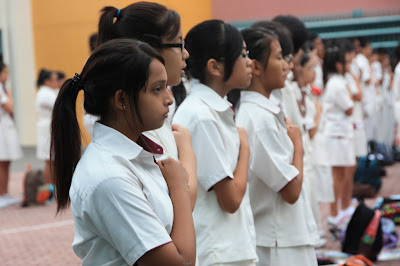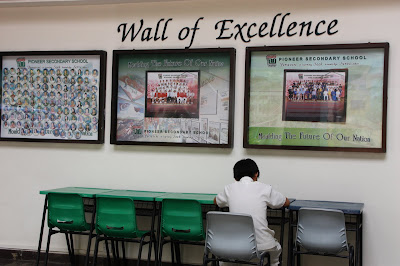Rohkeutta kieltenoppimiseen ja -opettamiseen
SOSIAALINEN MEDIA KIELTEN OPPITUNNEILLA, 9.10.2010
Sinikka Laakio-Whybrow, Kaarinan lukio
This is a list of links for my talk at the Finnish language teachers' union autumn PD session. My topic was 'Social media in foreign language lessons'. As my talk was in Finnish, to a Finnish audience, some of the links are only in Finnish.
1. BECOME A LEARNER FIRST
- Find interesting blogs, follow them - lurking is quite allowed!
- Here are some links from my RSS feed
OPEBLOGI
- Anne Rongas, sosiaalisen median pioneeri Kaakkois-Suomesta
BRAVE NEW WORLD
- Tania Sheko, teacher-librarian from Melbourne Australia, reflects on a wide variety of educational topics
LANGWITCHES BLOG
- Silvia Tolisano, technology integration facilitator from the US, background in Germany and Argentina
THE INNOVATIVE EDUCATOR
- Lisa Nielsen, educational technologist from the US, writes passionate posts about technology in education
TEACHING ENGLISH USING WEB 2.0
- Ann S. Michaelsen, Norwegian high school teacher blogger, her classes have student blogs, too
MY LANGUAGES
- Isabelle Jones, Head of Modern Languages (French, Spanish) in the UK, actively involved and interested in many language teaching initiatives
MS. BARKER'S ENGLISH
- Danika Barker, high school English teacher from Canada, uses class blogs for her groups
2. FIND INTERESTING ONLINE NETWORKS AND SERVICES
- Lurk at first, and join when you feel comfortable.
- Here are some that you might like to try
MY DEL.ICIO.US BOOKMARKS
- for example, I have link collections of online resources for all the different courses I teach
- Keep your own profile private ('friends only'), and start a professional page for students (they don't need to be your friends!)
- Voit liittyä myös erilaisiin ryhmiin, esim. Tieto- ja viestintätekniikkaopetuksessa
CLASSROOM 2.0
- almost 50.000 educators from around the world!
- hundreds of groups
- lots of discussions, always help and tips at hand, and a good place for networking and partner searching
SOMETU - Sosiaalinen media oppimisen tukena
- kotimainen verkosto, yli 3000 jäsentä kaikilta koulutuksen aloilta
VINKKIVERKKO
- yli 700 jäsentä, erillisiä ryhmiä kieltenopettajille
LANGUAGE LEARNING AND SOCIAL MEDIA (elearning europa)
- "A unique mix of activities exploring the relationship of language learning and social media in the web 2.0 era: Participatory debates, award-winning competitions, policy recommendations and reports, scientific publications and field studies."
- start following other language teachers; you will find links to good articles, videos, teaching resources etc.
- check my profile to find some language teachers among people I follow
FLICKR
- online photo sharing
- EdTech365/2010 - international educators' group to upload one photo a day for the year 2010
3. BECOME PART OF THE ONLINE CONVERSATION
- This really is the best part, and what makes it SOCIAL media.
- Start commenting on blog posts, taking part in forum discussions in social networks, updating your Facebook status, sending out tweets etc.
- And if you are brave enough, why not start writing your own blog!
4. EXPERIMENT WITH SMALL PROJECTS WITH YOUR STUDENTS
- I first started by finding a couple of interesting young student blogs, reading posts with students and then writing thoughtful comments
5. CARRY ON EXPERIMENTING AND TRYING NEW THINGS, LITTLE BY LITTLE
- You only learn by doing!
- Here are some examples of what I have done with students
LUKIORANSKAA
- Voilà-kirjasarjaan perustuva kurssiwikini, jota käytän ikään kuin 'digitaalisena kurssisuunnitelmana' opiskelijoille (oman wikin voi aloittaa, esim. vielä ilmaisesta palvelusta WIKISPACES)
SINGAPORE-KAARINA
- a project wiki done as group work in one English course - information about Finland and our town for Singaporean students who were coming for a student exchange
WHAZZUP?
- an educational network on the Ning platform (used to be free, unfortunately not any more!), with students from Asia and Europe - profile pages, discussion forums, photos, videos, blogs etc.
- blog posts also written during ordinary English courses
THROUGH GLOBAL LENSES
- photo/writing project between students in Kaarina Finland, Naples Florida and Melbourne Australia
- explanation about it in my blog
- Tania Sheko's project blog
6. TAKE PART IN WEBINARS
- This is good AND OFTEN FREE professional development for anyone!
VIRTUAL ROUND TABLE
- semi-annual online conference on language learning with technology
GLOBAL EDUCATION CONFERENCE
- November 15-19, 2010
SUOMALAISET AVO-WEBINAARIT
Photo: The Swing Carousel on Flickr















































